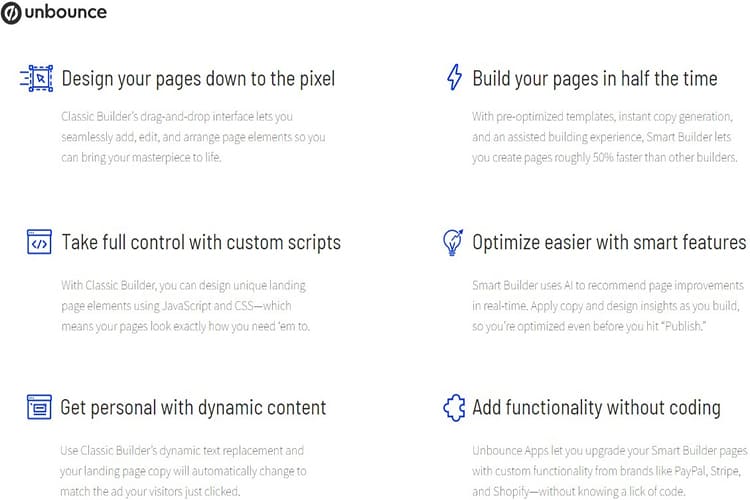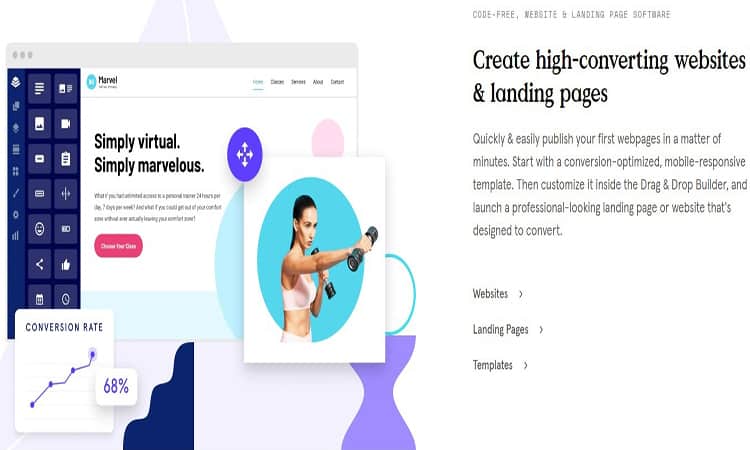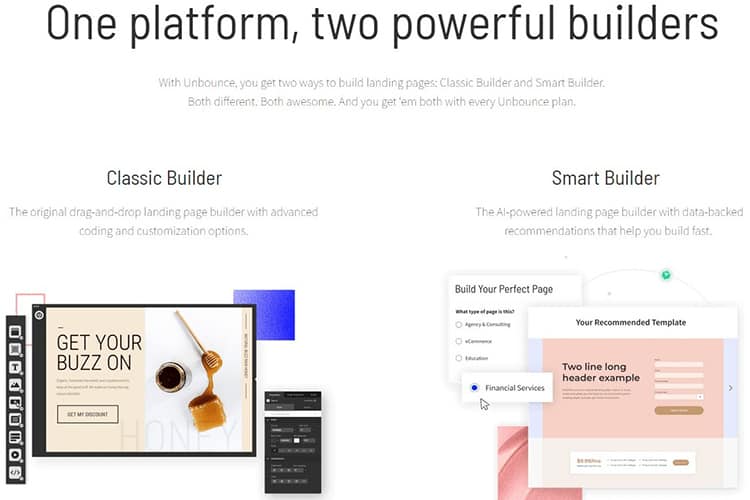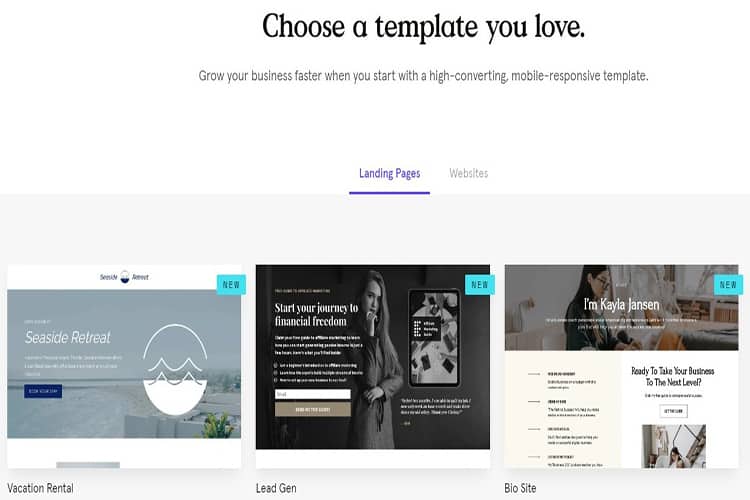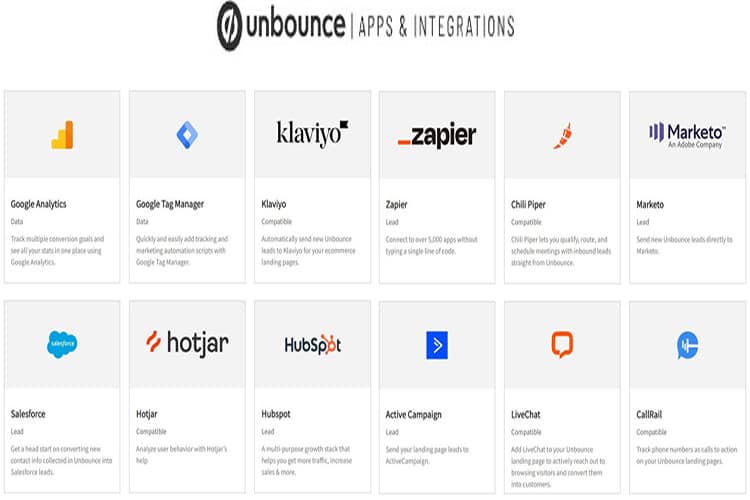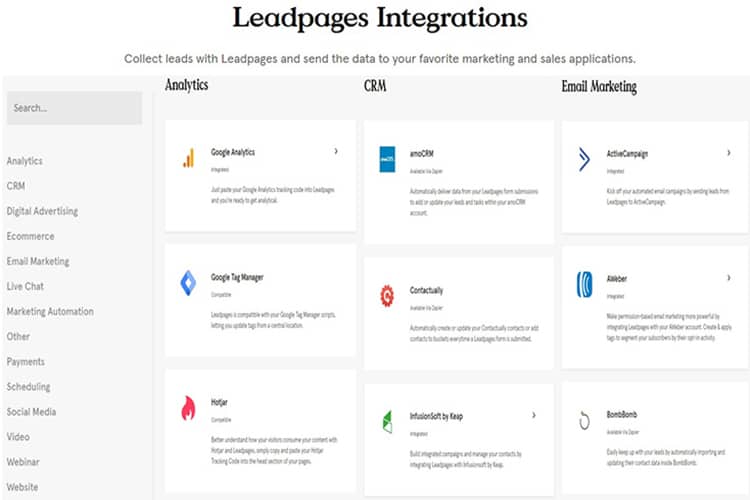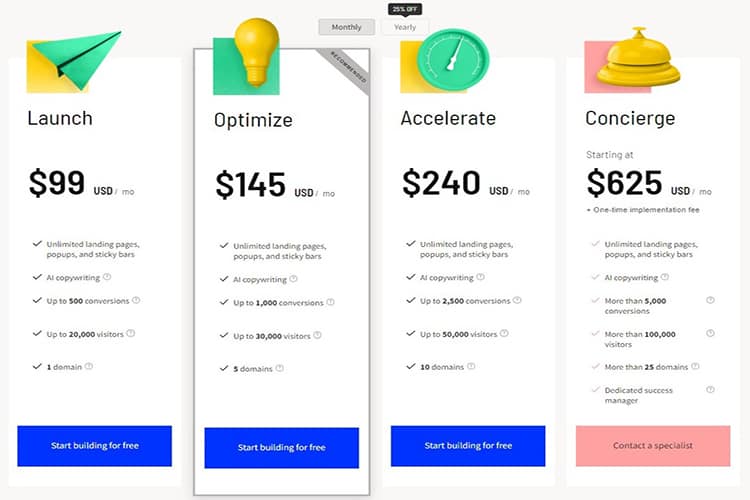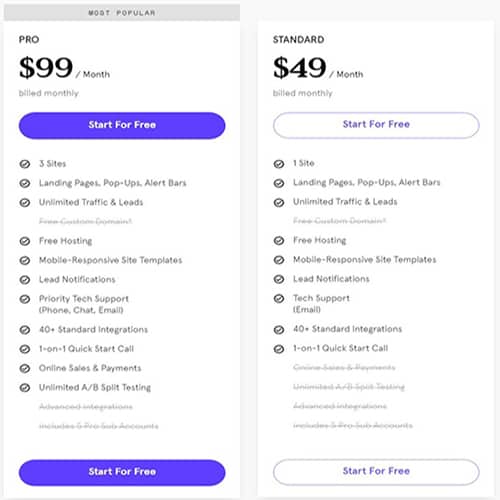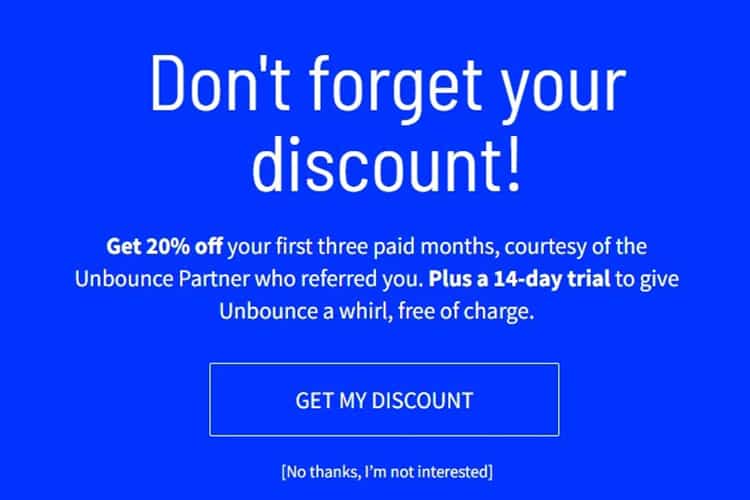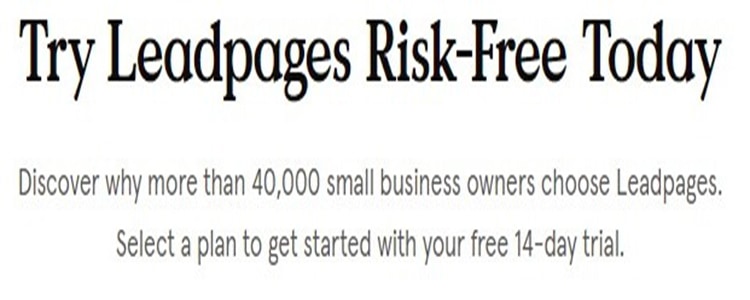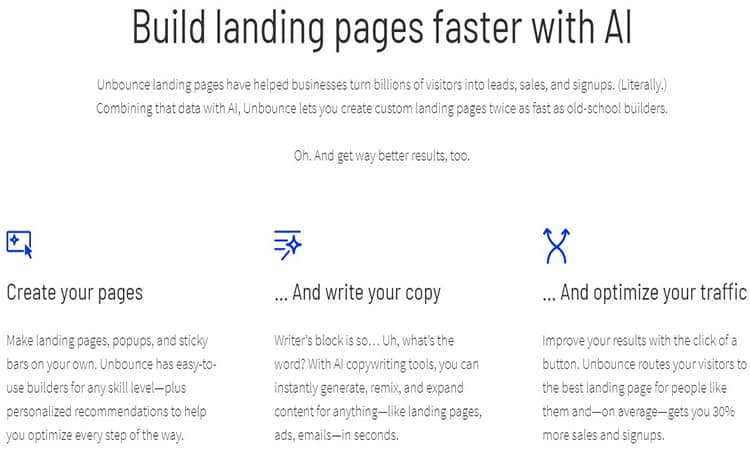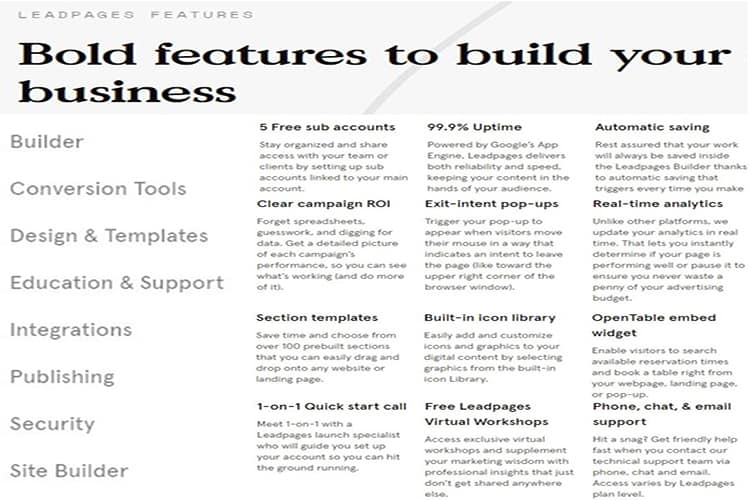Capturing leads and getting them to convert can feel like a Herculean task at times.
Finding the right combination of copy and design elements is a very tricky process that takes a lot of fine-tuning. However, just because creating landing pages is complete, that doesn’t mean it has to take forever.
Using a no-code, drag-and-drop landing page builder is one of the best ways to cut down on the time it takes to create your pages while simultaneously maximizing your results.
If you want to choose the best landing page builder for your specific needs, I’m going to show you the pros and cons of each option.
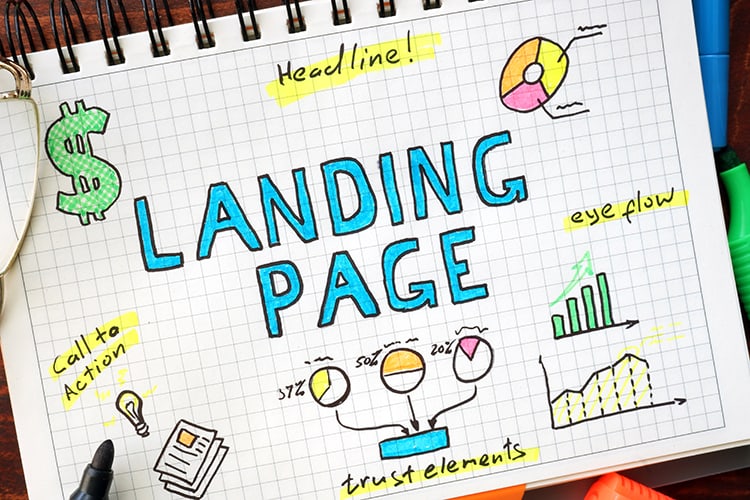
Quick Verdict – Which Tool Is the Winner?
Since both of these tools pull their weight in everything from templates to advanced integration capabilities, it can be tough to pick between them.
If you’re looking for an affordable, well-rounded solution then Leadpages is certainly the winner here – it's simple to use, gets the job done, and is quite a bit cheaper.
On the other hand, users who like the idea of using AI-driven Smart Traffic software to optimize their conversions would likely enjoy the package on offer from Unbounce.
It all comes down to your specific use case, so let’s delve deeper into these tools.
Our In-Depth Assessment of the Two Tools
Page Builder and Editor
Landing pages are an essential part of any online business.
You could have millions of impressions on your PPC ads driving traffic to your website but it won’t mean a thing if you aren’t able to convert the leads generated with a persuasive landing page.
The best way to optimize the conversions on your website is to have multiple landing pages that you can split test against one another.
However, this can be a very time-consuming process if you’re using a clunky and unintuitive editor (trust me, I know).
That’s why it’s so important to find a landing page builder with drag-and-drop builder functionality.
Having an editor that lets you tweak things in just a few clicks will make it significantly easier to create pages in less time so you can speed up the A/B testing process (sounds like a fantasy, right?).
Not quite.
Fantasies are for LOTR fans, and we're here to discuss the real thing.
So, let's do it!
Unbounce
Unbounce provides a WYSIWYG drag-and-drop builder that makes creating landing pages very easy even for those with limited experience.
You can add buttons, pictures, and text wherever you want without having to worry about editing the source code of your pages (still not a fantasy!).
Creating landing pages can be further simplified by using the numerous templates that Unbounce offers to its customers.
The benefits don’t end there though as you can take things to the next level by using Unbounce’s Smart Builder.
This lets you leverage the power of Artificial Intelligence (AI) and Machine Learning (ML) to streamline your content creation process — reducing time as well as cost!
All you need to do is write up a headline then watch as the AI creates content for your landing pages.
It’s not a perfect system and you’ll likely need to make some edits to the AI’s first pass but this significantly speeds up the pace at which you can get landing pages set up.
Finally, you can let the builder know what industry you’d like to target and it’ll suggest designs similar to pages that convert well in your sector (Gandalf not included!).
Leadpages
While there are many landing page builders out there, most marketers and business owners would agree that Leadpages is the industry leader when it comes to the quality of editors.
It strongly emphasizes the DIY approach to ensure users can set pages up themselves without needing the help of outside consultants.
In addition to being user-friendly, the editor is also just as easy to use on mobile platforms which means you’ll have a seamless experience no matter what device you’re on (not working on Nokia 3310 though).
The built-in lead conversion guidance coupled with its drag-and-drop editor makes optimizing your website simpler than ever before.
As if all that wasn’t enough, landing pages made through Leadpages tend to have the fastest load speed out of any competitor based on what we saw during testing.
There’s even a dedicated split test editor for those who want to focus their energy on A/B testing to optimize results.
Lastly, you can use other tools from the same software family like Leadlinks for one-click sign-ups or Leadboxes for pop-ups.
Using these tools together in the form of a cohesive stack can help you make the most out of your subscription costs.
Winner: Leadpages
While both of these landing page builders have editors that are rather easy to use even for beginners, Leadpages comes out as the clear winner here.
Its drag-and-drop editor is extremely intuitive and produces the fastest load times that we’ve seen — both of which are large pros.
Landing Page Hosting
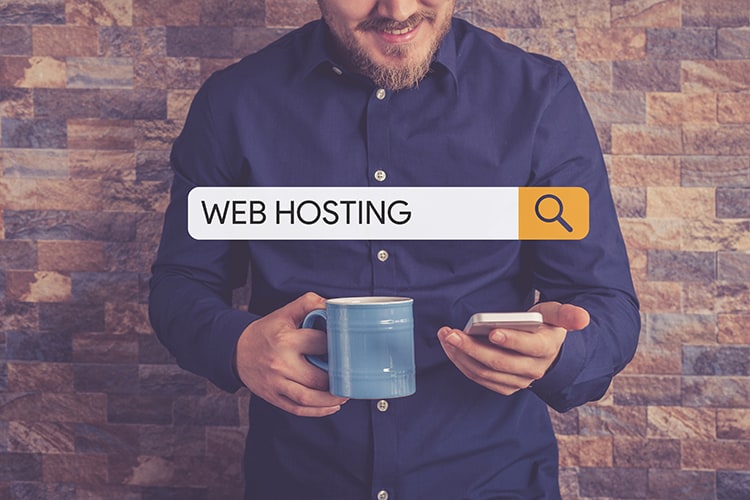
Whether it’s faster loading times, better customer support, or higher uptime there are many benefits to be reaped by getting the right host for your website.
After all, a single second of delay during page loading can shave 7% off your conversion rate which is an expensive price to pay.
Beyond conversion rate optimization, having hosting covered by your landing page builder is also a great way to cut down on operating costs since you won’t have to pay extra for third-party web hosting.
Let’s take a look at which builder offers the more compelling package.
Unbounce
If you choose Unbounce then you’ll be glad to know that your hosting will be taken care of without any additional fees. All landing pages are AMP-ready pages which makes it easier to target site visitors who are browsing with their mobile devices.
It’s also worth noting that the free hosting you get with Unbounce isn’t limited to landing pages but also sticky bars, pop-ups, and other elements that you may be using in your lead generation funnel.
There were also no reliability issues with Unbounce’s hosting during our testing.
Leadpages
Much like Unbounce, you’ll get free hosting with Leadpages. All the landing pages you create with their builder will be automatically hosted on their server.
You can even use a custom domain name which is a big plus since other landing page builders require that you use their domain or add a watermark.
Another benefit that Leadpages offers is the 14-day free trial that lets you test out your work-in-progress landing page without committing to a subscription.
That being said, you won’t be able to use custom domains while on the free plan so you’ll need to upgrade down the line if you want to use a custom domain.
This gives you the chance to gauge the hosting performance and landing page layout early on.
Winner: Leadpages
Both landing page builders have reliable hosting services that come at no extra charge on top of your existing subscription with them.
However, we have to give Leadpages the win since you have the option of testing out their hosting services through the free trial before paying for a plan.
Themes and Templates
In the dawn of Internet marketing, a simple webpage with a headline, an about us section, and a couple of images was all it took to get the message across to potential customers.
Nowadays, you need aesthetic themes and clear layouts that help site visitors navigate through your copy.
Having a landing page builder that comes with themes and templates makes it a lot easier to make a good first impression when people come across your website.
Both Unbounce and Leagpages have their own set of templates so let’s have a look at which one is better for your needs.
Unbounce
Unbounce lets you choose from their selection of over a hundred high-converting landing page templates. Every template is responsive across all platforms and the landing page builder is also extremely user-friendly.
Their pre-designed templates can even be filtered to help you find the ideal pick.
For instance, you can filter by tools like sticky bars or pop-ups to find the right template type. You can also add parallax effects or video backgrounds to templates using the “Special Features” tab.
Alternatively, you can choose templates based on your campaign type.
This helps you narrow your themes to those made explicitly for webinars, events, campaigns, sales pages, etc.
Finally, all templates are WordPress optimized which makes it easy to add their pre-designed landing pages to your existing website.
Leadpages
Leadpages has over 130 built-in templates to choose from and customize. You’ll be able to sort results by recency, popularity, and highest converting to find the right template for your landing page.
Sadly, the search isn’t as tailored as Unbounce or some competitors since you can’t filter by campaign type.
However, you can filter by page type like a giveaway, lead capture, webinar, checkout, about, and various other categories.
You can also select specific industries like marketing, automotive, real estate, finance, and many more.
Winner: Unbounce
When you combine mobile-responsive templates with Unbouce’s Smart Builder, creating a high-converting landing page has never been easier.
Ease of Use

Ease of use is one of the most important things to consider when choosing a drag-and-drop landing page builder.
Even the best tool would be worthless if you can’t figure out how it works or spend months getting past the learning curve.
Unbounce
Unbouce’s editor is about as easy to use as it gets, especially when you use one of the many templates on offer.
Other tools would have you endure a long onboarding flow but Unbounce is simple enough that you can just pick your template and start customizing to your heart’s content.
Templates aren’t the only thing that makes Unbounce so great to use though. The fact that it has quick load speeds, a code-free experience, and custom HTML all compiles to make this one of the easiest tools to use when building your pages.
Leadpages
Leadpages has one of the most intuitive drag-and-drop editors available but that alone doesn’t guarantee ease of use on a macro level.
Fortunately, it has fast load speeds and code-free editing to back that up.
The editor is also mobile-responsive which means you can edit pages no matter where you are.
When we tested out the templates that Leadpages offers, we were happy to find that they’re ideal for mobile and ripe for use with the integrations in our tool stack.
Considering Leadpages has dozens of integrations, this is another selling point they have going for them.
The other tools in its product family like Leaddigits, Leadboxes, and Leadlinks also work together seamlessly which further improves the ease of use aspect.
Overall, Leadpages emphasizes the DIY approach to creating high-converting landing pages.
Winner: Tie
You can’t go wrong as both tools are easy to use thanks to fast load times, code-free user experiences, and drag-and-drop editors.
Uptime
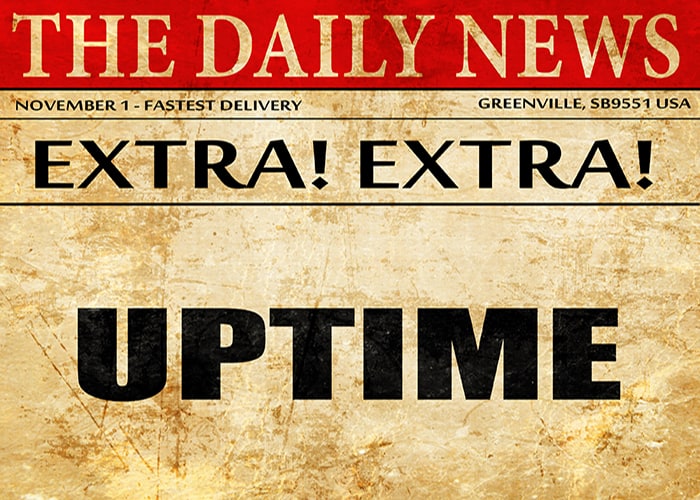
If you have thousands, hundreds of thousands, or millions of visitors going to your site every day then even just a few minutes of downtime can put a sizable dent on your bottom line.
To avoid such incidents, you should find a landing page host that has reliable servers and high uptime.
It’s true that most page builders have excellent uptime but there’s still variation between different providers which is why you need to do your homework before making a decision.
Let’s take a closer look at the raw numbers.
Unbounce
Unbounce is one of the most reliable landing page hosts on the market since it guarantees 99.96% uptime every single month.
It actually exceeds that guarantee for most months with uptime remaining steady at 100% on all elements of the website.
Beyond the reliability of Unbounce servers, they’re also some of the fastest. While page load time isn’t everything, it can actually make a big difference in terms of conversions.
Most people don’t want to wait more than a couple of seconds for a page to load (no BS!) so having fast hosting is an absolute must.
Leadpages
Rather than having its own network of servers, Leadpages uses Google Cloud services to host all the landing pages on its platform. When measuring landing pages and sticky bars you’ll see that load speeds are also one of the fastest.
This is essential since large numbers of pop-ups and sticky bars have the tendency to slow down load times for less reliable landing page builders.
Outside of fast load times for pop-ups and sticky bars, you’ll be happy to know that Leadpages has automatic cloud backups whenever you make changes to your pages.
Winner: Unbounce
Both platforms have fast load times and the ability to handle as many pop-ups as you want but the fact that Unbounce regularly achieves 100% uptime makes it the clear winner in this category.
Analytics

If you don’t have a deep level of understanding of what your customer needs, it will be extremely difficult to create landing pages that appeal to them and convert.
It could also drive you to invest in marketing automation strategies that don’t target the right pain points or channels.
Through website analytics, you’ll be better able to increase customer traffic and engagement by aligning your landing pages with your customer’s needs.
Let’s take a look at the difference in analytics capabilities when using Leadpages vs Unbounce.
Unbounce
Unbounce has a real-time dashboard that shows you the performance of all your landing pages. Its Smart Traffic feature uses AI to deliver one of the best analytics experiences we’ve ever had while testing SaaS products.
The AI can autonomously measure the preferences of visitors and direct them to the pages that are most likely to appeal to them.
With as little as 50 visits, the algorithm can start optimizing performance and work towards a 20% increase in conversions.
Leadpages
Leadpages lets you look at analytics at a granular level. You’ll be able to look at metrics for all your pop-ups and pages including the number of unique views, total views, total conversions, and the overall conversion rate.
If you want to redesign the metrics on your pop-ups or pages then you can always hit the reset analytics button.
Furthermore, the tool lets you look at hourly analytics for the past week and daily analytics for the past three months.
Finally, you can look at results either on a cumulative level or for specific periods.
Winner: Unbounce
While Leadpages offers highly-detailed analytics, Unbounce takes the win for their AI-driven Smart Traffic feature that has proven results averaging out at 20% conversion rate increases.
A/B Testing
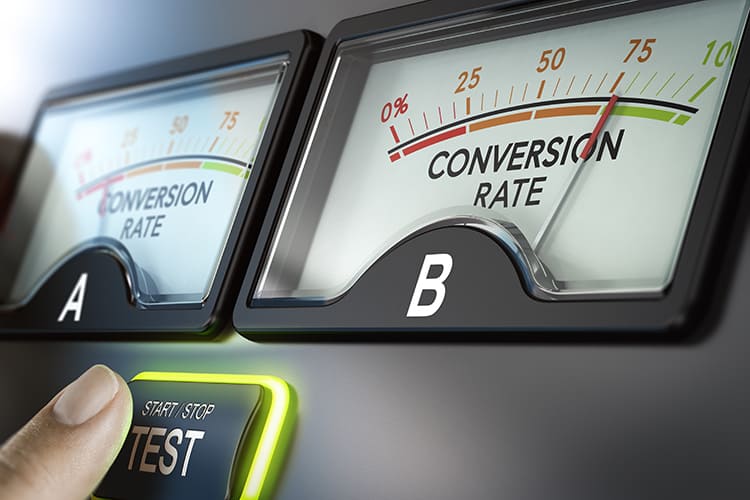
At the end of the day, landing pages are all about lead capture and conversion rates.
The best way to optimize that is through A/B testing.
You wouldn’t launch sales pages or run an email marketing campaign without split-testing multiple variants, so why skip the split testing on your published landing pages?
In fact, without A/B testing most PPC campaigns would quickly become unsustainable due to the high cost.
Fortunately, you don’t have to rely on third-party analytics when you use Unbounce and Leadpages since both of them help you maximize conversion rates through A/B testing.
Unbounce
Let us start by saying that Unbounce’s entry-level “Launch plan” doesn’t include A/B testing so you’ll need a more advanced plan to access their analytics.
That said, the pricing of their premium plans and enterprise plan is pretty fair so it’s not a huge detractor from the platform.
Once you’re on the appropriate plan, you’ll have access to conversion features that measure various elements. These include headings, subheadings, page length, and the size, position, shape, or color of your call to action button.
This lets you create landing pages and marketing campaigns that actually drive results.
Leadpages
If you’re a Leadpages user then you’ll need to be on the “Pro plan” or higher to access A/B testing features for their drag-and-drop landing pages.
You’ll be able to look at a before-and-after analysis of your landing pages that tell you which elements are boosting results.
A few areas it looks at are landing page templates, button color/positioning, subheadings, and headlines so you can see the tangible outcomes of the changes you make.
You can also create specific labels for your A/B split tests to further identify the page design elements benefitting your conversion rate.
Winner: Tie
There isn’t much difference between the conversion features of Leadpages vs Unbounce, as neither has a heatmap.
However, Instapage does have a heatmap so perhaps Unbounce and Leadpages will follow suit in the future.
Integrations
Unbounce
With Unbounce, you should consider a few miscellaneous integrations like:
- ActivateCampaign
- Automate.io
- Constant Contact
- Drip
- HubSpot
- InfusionSoft
- Intercom
- Mailchimp
On the analytical side of things, you could consider:
- Google Analytics
- Google Tag Manager
- Kissmetrics
- Hotjar
There are also quite a few communication integrations like:
- GoToWebinar
- Freshmail
- Gmail
- Zapier email
- LiveChat
- Mailgun
On the automation and CRM side of things, you have:
- Marketo
- Salesforce
- Pardot
- OnePageCRM, and a few others to choose from.
Leadpages
While Leadpages may not have native heatmaps like Instapage, you can achieve the same end result by using its Hotjar integration.
Leadpages also has other analytics integrations like:
- Google Analytics
- Google Tag Manager
- JavaScript Analytics
On the CRM side of things, you’ll be able to integrate:
- Salesforce
- HubSpot
- Zoho
- amoCRM
- InfusionSoft
- Contactually
- Pardot
- LionDesk
- PipeDrive
This makes it quite easy to use Leadpages with your existing analytics tool stack and optimize every landing page.
It also makes advertising your landing page easier since there are integrations for:
- Bing ads
- Facebook ads
- Instagram ads
- Google Ads
- BrightRoll
- Taboola
Other notable integrations include:
- Shopify
- ActiveCampaign
- ConvertKit
- Drip
- Constant Contact
- Mailchimp
- Klaviyo
- Intercom, and many more.
Winner: Tie
Both platforms have a large integrations gallery that you can browse through.
It comes down to which integrations you need most or which services you already use in your existing tool stack.
Pricing
Unbounce
If you’ve completed your Unbounce trial and want to continue using the marketing tool then you have four distinct plans to choose from.
The “Launch plan” costs $90 per month which is good for startups since it’s affordable and accommodates up to 20,000 visitors. You’ll also be able to use it for up to 500 conversions but only on a single domain.
The second plan is the “Optimize plan” which will run you $145 per month and increase visitor capacity to 30,000, lets you use up to five domains.
Most importantly, it unlocks the Smart Traffic feature which can work wonders for your conversions.
Next up, there's the “Accelerate plan” which costs $245 per month and lets you use the marketing tool on up to 10 domains.
You’ll also be able to accommodate as many as 50,000 visitors and 2,500 conversions — that said, it’s priced higher than most competitors.
The last plan is the “Concierge plan” and is the most expensive one, starting at $625 (one-time implementation fee).
It offers more than 5,000 conversions, visitor capacity surpasses 100,000, and you can use it on over 25 domains. In addition, you'll also get a dedicated success manager.
Leadpages
Leadpages has two plans that you can choose from after your trial period ends.
The “Standard plan” costs $49 per month and comes with the basic features that you’ll need to make the most out of this marketing tool. These include free hosting, unlimited traffic, mobile-responsive landing page templates, and 40+ integrations.
However, those looking for a more versatile experience can go for the more advanced plan on offer which is the “Pro plan” — costing $99 per month.
You’ll get expanded functionality like unlimited split tests, online payments, and live chat support.
If you want to use the Leadpages tool for your landing pages long-term but find the pricing to be a bit high then you can opt for annual billing.
Paying for your subscription annually, the “Standard plan” price drops down to $37 per month and the “Pro plan” price goes down to $74 per month.
Winner: Leadpages
While the Unbounce plan does offer a larger array of choices, Leadpages has a simpler pricing model that gives you more value for less money which makes it hard to beat.
After all, being able to accommodate unlimited leads on your landing pages for $49 per month is definitely a steal in my book.
Trial Period
When choosing between marketing tools, it’s reasonable to assume that one would want to test its features out before dropping a few hundred dollars on the enterprise plan.
Luckily, free trials can make it easier to test Leadpages and Unbounce before paying a dime for either landing page tool.
Unbounce
Unbounce offers a 14-day trial that you can use to test its features and see if its drag-and-drop editor is the right pick for you.
You can create landing pages on their Launch, Optimize, and Accelerate plans without risking your hard-earned money.
Leadpages
The no-code drag-and-drop landing page builder of Leadpages also offers a 14-day trial to prospective customers.
It’s just as easy to set up as most website builders so you can start testing the service out just a few minutes after signing up for your trial.
Winner: Tie
Both Leadpages and Unbounce offer free trials with a 14-day duration so you can’t go wrong with either one here.
Once you’ve tested their features out, you can use the drag-and-drop editor to create free trial landing pages for your own product or service.
Customer Support
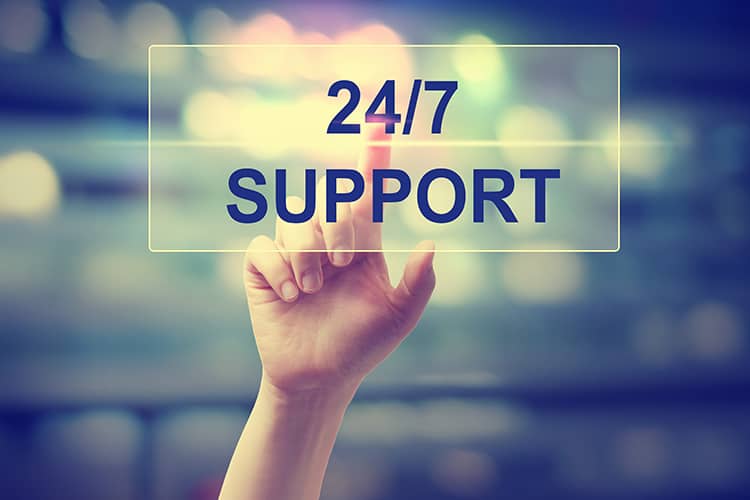
While ease of use, templates to choose from, a drag-and-drop website builder, and landing pages that use custom domains are all essential factors to consider, don't ignore the support aspect when choosing between Unbounce vs Leadpages.
Unbounce
Unbounce’s award-winning support team can be reached through live chat in just a couple of clicks (as long as you’re logged in). The help center also helps you self-solve problems if you run into a problem while creating landing pages.
Leadpages
Leadpages offers 24/7/365 customer service which is definitely a great benefit that helps justify the amount you’re paying per month.
You’ll also be offered a selection of self-help articles that you can read while waiting for a customer support representative.
Winner: Tie
You really can’t go wrong with the customer support team of either tool here.
Unique Features
Unbounce
- Parallax effects and video backgrounds
- Free Starter plan
- Smart Builder and Smart Traffic capabilities
Leadpages
- Automatic backup saving
- Unlimited alert bars (alert bars appear at the bottom of your page with a CTA)
- Global page style settings
Summary of Pros and Cons
Unbounce
Pros
- AMP landing pages
- Filter templates by campaign type
- Unlimited leads on all plans
Cons
- More expensive
Leadpages
Pros
- More affordable
- 24/7/365 customer service
- Annual discounts
Cons
- Live chat support reserved for the Pro plan
Conclusion: Unbounce vs Leadpages – Which One Is Right for You?

While you probably shouldn’t get the enterprise plan of either software before testing them out with a free trial, there’s no doubt that these marketing tools can help your lead capture funnel convert better.
Here are a few differences to consider if you’re still on the fence:
Choose Unbounce If:
- You’re very picky with templates
- You have high traffic and want industry-leading uptime
- You’d like more pricing options
Choose Leadpages If:
- You prefer CRM integrations like Salesforce, HubSpot, and Zoho over additional email marketing integration options
- You like simple, affordable pricing models
- Easy editing is your #1 priority

